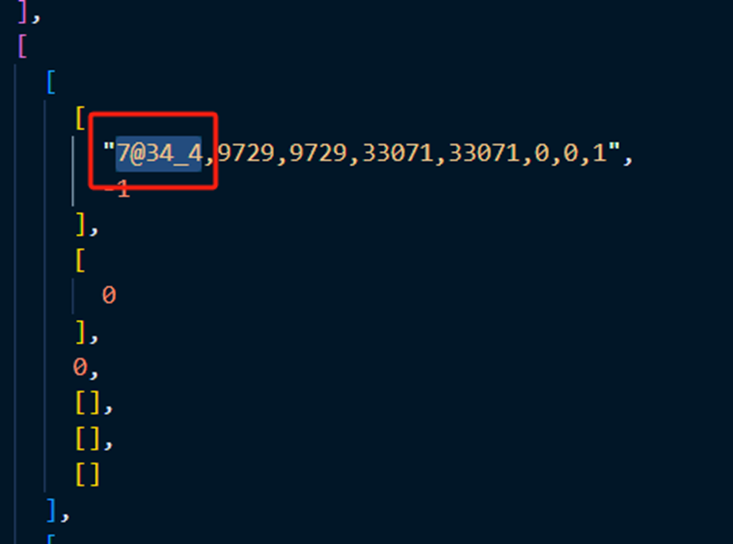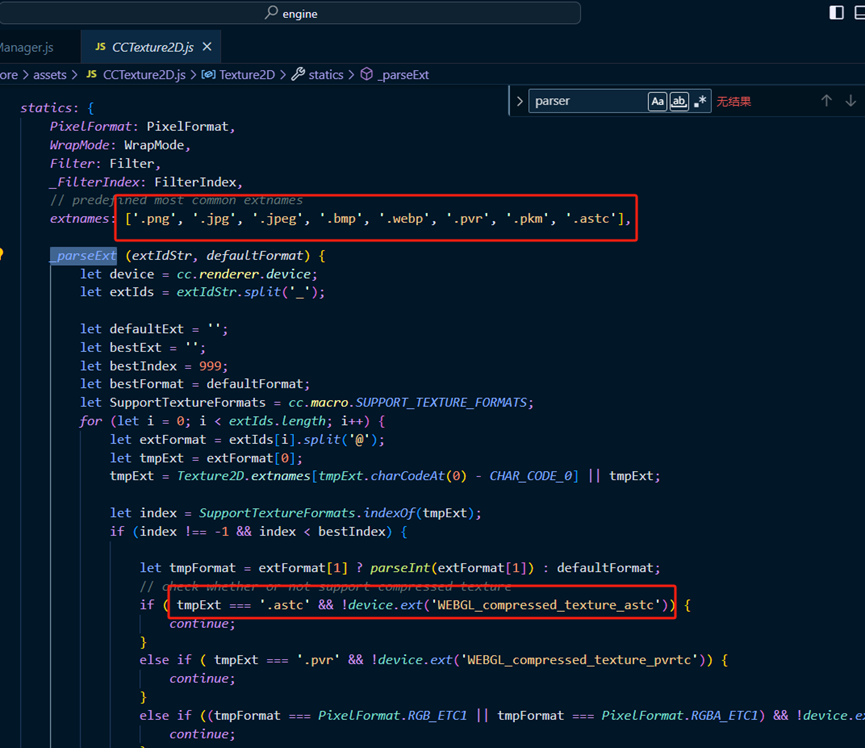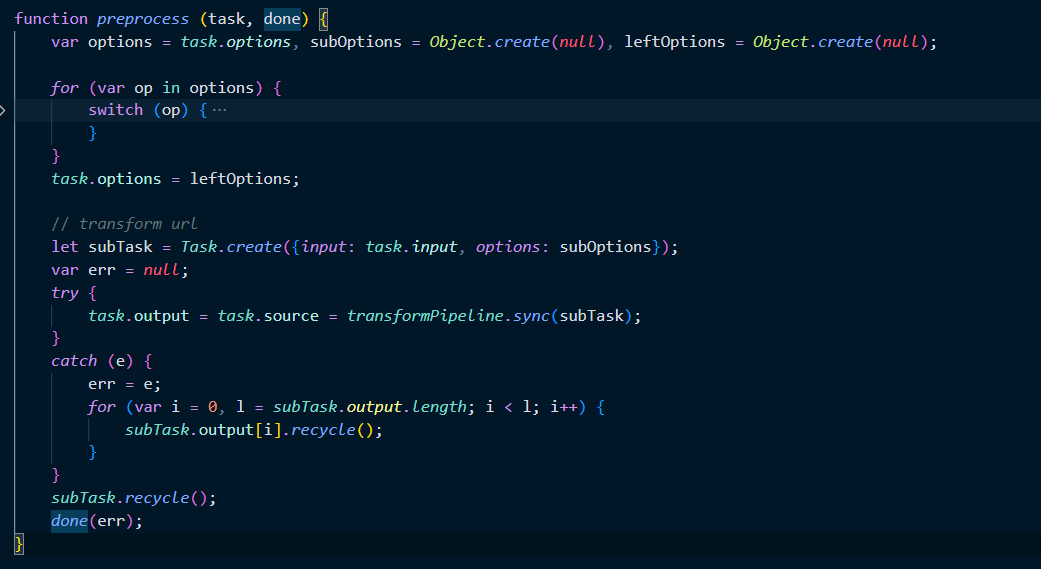图片
图片的格式
| 图片文件格式 |
|---|
| png |
| jpg |
| 纹理压缩格式 |
|---|
| ETC1/2 |
| PVRTC |
| ASTC |
图片的属性
| 图片属性 | 解释 |
|---|---|
| 分辨率 | 宽高像素值(pt),如:1024*1024 |
| 位深度 | 用来存储像素颜色的值,如RGBA8888,红黄蓝透明度4个维度每个8bit,一共就是32位,一般使用的就是32位,也被称为真彩色 |
| 文件大小 | 文件所占用的存储大小 |
图片的优化
图片的优化分为两种:
- 文件大小优化:这种优化会影响到包大小,较小的图片大小对于手机存储容量和网络传输速度和时间会更友好。
一般的优化方式是使用压缩工具如pngquant、tinypng等,直接压缩文件大小。
- 图片纹理优化:
图片文件大小压缩,不意味着读到内存中的大小会减少。
一般情况下,以ARPG8888来说,计算一个1024*1024分辨率的图片读到内存中的大小,计算公式为:
1024 * 1024 * 4 * 8 = 33,554,432 bit = 4,194,304 byte ≈ 4 mb 理解起来就是 1024 * 1024 个像素,每个像素有 argb 4个通道,每个通道含有 8 bit数据用来存储颜色值。
png格式不能直接被GPU识别,需要在cpu把图片读进内存中解码后,再传递给gpu使用,这样做会造成一定的cpu消耗和很大的瞬时运行内存(RAM)占用。
因为大部分gpu对于压缩后的纹理有比较好的支持,无需cpu解码,占用内存小。于是我们要寻找一种合适的纹理压缩方式。
- etc1不支持透明通道。
- etc2效果很差,容易出现色块。
- PVRTC仅能在ios上使用.
这时候astc格式就展露在我们眼前,IOS和安卓端都对astc有较好的支持率。
- iPhone6及iPad mini 4以上iOS设备支持。
- 大多数支持OpenGL ES 3.1或Vulkan的现代Android GPU也支持ASTC格式,其中包括:自Adreno 4xx / Snapdragon 415(2015年)起的高通GPU,自Mali T624(2012年)起的ARM GPU,自Tegra K1(2014年)起的NVIDIA GPU,以及自GX6250(2014年)起的PowerVR GPU。
在运行内存中来说,astc的内存使用能节省75%左右,提升巨大。
cocoscreator中源码理解
creator引擎在编译时会把选中的纹理压缩类型记录到import文件夹下的json文件中,多种图片格式以下划线‘_’区分开,下图演示里选择了astc6x6格式和webp格式,所以生成的类型就是
代码中在读取文件格式时,会根据列举的文件类型判断当前机器是否支持。由下面代码图里能够看到,7@34这里的7代表的就是第7个.astc,4代表的就是第4个.webp。若当前设备不支持astc就会去寻找webp格式。

cocoscreator中源码整个下载流程的理解(建议配合cocos2.4.11源码享用)
一切的一切都要从bundle.js这个类说起,类中的load函数会调用cc.assetManager.loadAny函数来下载相关资源并获取资源数据返回。
,传递的参数是资源名paths,类型type,进度回调函数onProgress,完成回调函数onComplete。
cc.assetManager是CCAssetManager类,这个类里有一个loadAny函数,此函数简单封装了一个Task并把task传递到pipeline中。这里的pipeline是定义在shared.js中的new Pipeline(‘normal load’, [])一个名字叫做normal load的管线,异步执行任务,管线填充在CCAssetManager类中pipeline.append(preprocess).append(load);包含一个preprocess和load方法。
task的状态为: { input: 资源名, onProgress: onProgress, onComplete: onComplete, options: { preset: 'default', __requestType__: 'path', type: type, bundle: bundle名, __outputAsArray__: false, } } 
4. normal load–pipeline先调用preprocess,这个函数里对Task的options属性做遍历,这里也就是preset、requestType、type、bundle和__outputAsArray__五个key。
requestType、type、bundle和preset键值对保存到subOptions对象中,__outputAsArray__和preset保存到leftOptions对象中,并覆盖掉task的options属性。
新建一个subTask,input为task.input,options为subOptions对象,走transformPipeline管线流程同步执行任务,获取的值设置为task.source和task.output。最后调用done()。
task的状态为: { input: 资源名, onProgress: onProgress, onComplete: onComplete, options: { preset: 'default', __outputAsArray__: false, }, output: , source: , } subTask的状态为: { input: 资源名, options: { preset: 'default', __requestType__: 'path', type: type, bundle: bundle名, } } 
5. transformPipeline里包含两个函数parse和combine。
- parse管线任务,先判断input,若input为字符串,新建一个无原型链对象item,把item对象的【options.__requestType__值】,也就是【RequestType.PATH】,也就是【‘path’】设置为input值,把options中的其他键值对都复制到item中,这里包含四个键值对,requestType、type、bundle和path。
再遍历item,这里只有path这个key有处理,其他key都过滤了,通过bundle的_config找item.path值的info。这里的item.path也就是我们一开始传进来的资源名。info里包含了资源的uuid。
把config、info和uuid值填入到out对象中,并把out对象push到task.output中。
管线会把task.output值赋值给task.input。
subTask的状态为: { options: { preset: 'default', __requestType__: 'path', type: type, bundle: bundle名, }, input: [{ config: bundle所有配置, uuid: 资源的uuid, info: {path: path, uuid: uuid}, ext: '.json', }] } 源码展示: function parse (task) { var input = task.input, options = task.options; input = Array.isArray(input) ? input : [ input ]; task.output = []; for (var i = 0; i < input.length; i ++ ) { var item = input[i]; var out = RequestItem.create(); if (typeof item === 'string') { item = Object.create(null); item[options.__requestType__ || RequestType.UUID] = input[i]; } if (typeof item === 'object') { // local options will overlap glabal options cc.js.addon(item, options); if (item.preset) { cc.js.addon(item, cc.assetManager.presets[item.preset]); } for (var key in item) { switch (key) { case RequestType.UUID: var uuid = out.uuid = decodeUuid(item.uuid); if (bundles.has(item.bundle)) { var config = bundles.get(item.bundle)._config; var info = config.getAssetInfo(uuid); if (info && info.redirect) { if (!bundles.has(info.redirect)) throw new Error(`Please load bundle ${info.redirect} first`); config = bundles.get(info.redirect)._config; info = config.getAssetInfo(uuid); } out.config = config; out.info = info; } out.ext = item.ext || '.json'; break; case '__requestType__': case 'ext': case 'bundle': case 'preset': case 'type': break; case RequestType.DIR: if (bundles.has(item.bundle)) { var infos = []; bundles.get(item.bundle)._config.getDirWithPath(item.dir, item.type, infos); for (let i = 0, l = infos.length; i < l; i++) { var info = infos[i]; input.push({uuid: info.uuid, __isNative__: false, ext: '.json', bundle: item.bundle}); } } out.recycle(); out = null; break; case RequestType.PATH: if (bundles.has(item.bundle)) { var config = bundles.get(item.bundle)._config; var info = config.getInfoWithPath(item.path, item.type); if (info && info.redirect) { if (!bundles.has(info.redirect)) throw new Error(`you need to load bundle ${info.redirect} first`); config = bundles.get(info.redirect)._config; info = config.getAssetInfo(info.uuid); } if (!info) { out.recycle(); throw new Error(`Bundle ${item.bundle} doesn't contain ${item.path}`); } out.config = config; out.uuid = info.uuid; out.info = info; } out.ext = item.ext || '.json'; break; case RequestType.SCENE: if (bundles.has(item.bundle)) { var config = bundles.get(item.bundle)._config; var info = config.getSceneInfo(item.scene); if (info && info.redirect) { if (!bundles.has(info.redirect)) throw new Error(`you need to load bundle ${info.redirect} first`); config = bundles.get(info.redirect)._config; info = config.getAssetInfo(info.uuid); } if (!info) { out.recycle(); throw new Error(`Bundle ${config.name} doesn't contain scene ${item.scene}`); } out.config = config; out.uuid = info.uuid; out.info = info; } break; case '__isNative__': out.isNative = item.__isNative__; break; case RequestType.URL: out.url = item.url; out.uuid = item.uuid || item.url; out.ext = item.ext || cc.path.extname(item.url); out.isNative = item.__isNative__ !== undefined ? item.__isNative__ : true; break; default: out.options[key] = item[key]; } if (!out) break; } } if (!out) continue; task.output.push(out); if (!out.uuid && !out.url) throw new Error('Can not parse this input:' + JSON.stringify(item)); } return null; } - combine管线任务,主要是拼出来完整的资源地址。
subTask的状态为: { options: { preset: 'default', __requestType__: 'path', type: type, bundle: bundle名, }, output: [{ config: bundle所有配置, uuid: 资源的uuid, info: {path: path, uuid: uuid}, ext: '.json', url: 具体地址, }] } task的状态为: { input: 资源名, onProgress: onProgress, onComplete: onComplete, options: { preset: 'default', __outputAsArray__: false, }, output: [{ config: bundle所有配置, uuid: 资源的uuid, info: 具体信息, ext: '.json', url: 具体地址, }], source: [{ config: bundle所有配置, uuid: 资源的uuid, info: 具体信息, ext: '.json', url: 具体地址, }], } 源码展示: function combine (task) { var input = task.output = task.input; for (var i = 0; i < input.length; i++) { var item = input[i]; if (item.url) continue; var url = '', base = ''; var config = item.config; if (item.isNative) { base = (config && config.nativeBase) ? (config.base + config.nativeBase) : cc.assetManager.generalNativeBase; } else { base = (config && config.importBase) ? (config.base + config.importBase) : cc.assetManager.generalImportBase; } let uuid = item.uuid; var ver = ''; if (item.info) { if (item.isNative) { ver = item.info.nativeVer ? ('.' + item.info.nativeVer) : ''; } else { ver = item.info.ver ? ('.' + item.info.ver) : ''; } } // ugly hack, WeChat does not support loading font likes 'myfont.dw213.ttf'. So append hash to directory if (item.ext === '.ttf') { url = `${base}/${uuid.slice(0, 2)}/${uuid}${ver}/${item.options.__nativeName__}`; } else { url = `${base}/${uuid.slice(0, 2)}/${uuid}${ver}${item.ext}`; } item.url = url; } return null; } - 管线运行完毕,返回subTask.output
- 回到normal load管线任务中的preprocess任务,transformPipeline返回了对象设置成task的output和source值。把output的值赋值给input,再把output设为null,继续下一个normal load管线任务load。
task的状态为: { onProgress: onProgress, onComplete: onComplete, options: { preset: 'default', __outputAsArray__: false, }, input: [{ config: bundle所有配置, uuid: 资源的uuid, info: {path: path, uuid: uuid}, ext: '.json', url: 具体地址, }], source: [{ config: bundle所有配置, uuid: 资源的uuid, info: 具体信息, ext: '.json', url: 具体地址, }], } - load函数里给task.options新增了progress和__exclude__字段,progress用来记录资源下载进度。然后遍历每一个task.input,对每一个需要load的资源新建了一个subTask,input值为每一个task的input值,onProgress为task.onProgress,options为task.options,progress为task.progress,onComplete为新的函数,完成时调用,更新progress中的值。再把这个subTask传递到loadOneAssetPipeline下载管道中。
subTask的状态为: { input: { config: bundle所有配置, uuid: 资源的uuid, info: {path: path, uuid: uuid}, ext: '.json', url: 具体地址, }, onProgress: onProgress, onComplete: newComplete, options: { preset: 'default', __outputAsArray__: false, __exclude__: {}, }, } task的状态为: { onProgress: onProgress, onComplete: onComplete, progress : { finish: 0, total: task.input.length, canInvoke: true }, options: { preset: 'default', __outputAsArray__: false, __exclude__: {}, }, input: [{ config: bundle所有配置, uuid: 资源的uuid, info: 具体信息, ext: '.json', url: 具体地址, }], source: [{ config: bundle所有配置, uuid: 资源的uuid, info: 具体信息, ext: '.json', url: 具体地址, }], } 源码展示: function load (task, done) { let firstTask = false; if (!task.progress) { task.progress = { finish: 0, total: task.input.length, canInvoke: true }; firstTask = true; } var options = task.options, progress = task.progress; options.__exclude__ = options.__exclude__ || Object.create(null); task.output = []; forEach(task.input, function (item, cb) { let subTask = Task.create({ input: item, onProgress: task.onProgress, options, progress, onComplete: function (err, item) { if (err && !task.isFinish) { if (!cc.assetManager.force || firstTask) { if (!CC_EDITOR) { cc.error(err.message, err.stack); } progress.canInvoke = false; done(err); } else { progress.canInvoke && task.dispatch('progress', ++progress.finish, progress.total, item); } } task.output.push(item); subTask.recycle(); cb(); } }); loadOneAssetPipeline.async(subTask); }, function () { options.__exclude__ = null; if (task.isFinish) { clear(task, true); return task.dispatch('error'); } gatherAsset(task); clear(task, true); done(); }); } - loadOneAssetPipeline下载单资源管线包含两个管线任务,fetch和parse。
- fetch函数调用packManager.load获取资源数据。packManager.load先判断是否在files缓存中有无此id。由于我们在加载资源前必定已经加载了fgui的bin文件,而我们都是选择合并json类型,而bin文件下载时已经把依赖的json文件下载过了,文件值都缓存到files中,这里就直接拿到json信息了,返回值赋值给task的file变量,也就是包含资源类型的json串。进入下一个管线任务parse。parse函数中对未缓存的uuid资源调用parser.parse函数,传递file值。其中又调用parser.parseImport函数,传递file和options;继续调用deserialize函数,传递file和options;继续调用cc.deserialize也就是deserialize-compiled文件中的deserialize函数,传递file和options;继续调用parseInstances;继续调用deserializeCustomCCObject;继续调用对象的_deserialize函数;这里图片对象调用的就是CCTexture2D的_deserialize函数;继续调用Texture2D._parseExt函数;这个_parseExt函数里就做了判断,对资源类型进行解析,并判断设备是否支持纹理类型,支持就返回该后缀。假设这里返回.png后缀,设置Texture2D的_native属性为.png,再设置其他属性,如过滤方案,并返回一个CCTexture2D对象。
- 这里会衍生到图片的其他属性值,原串是这样的,eg: “0,9729,9729,33071,33071,0,0,1”
- 第一个0:表示图片的纹理类型,0就是第0个.png。其他类型如下[‘.png’, ‘.jpg’, ‘.jpeg’, ‘.bmp’, ‘.webp’, ‘.pvr’, ‘.pkm’, ‘.astc’],
- 第二个9729:表示纹理缩小时设定的纹理过滤方案。const GL_NEAREST = 9728;const GL_LINEAR = 9729; 9728是最近点过滤,采样时选择最近的点,成本小,但易产生锯齿。9729是线性过滤,由4个颜色进行加权,这种方法可以让纹理边缘看起来更平滑,但需要进行更多的计算。
- 第三个9729:表示纹理放大时设定的纹理过滤方案。同上。
- 第四个33071:表示横轴纹理环绕方式。指定了当纹理坐标超出0到1的标准范围时该如何处理纹理的采样。10497是重复、33071是边缘拉伸、33648是镜像重复。
- 第五个33071:表示纵轴纹理环绕方式。同上。
- 第六个0:表示颜色是否预乘,1表示预乘,0表示非预乘。
- 第七个0:表示是否是否mipmaps。1表示使用,0表示不使用。
- 第八个1:表示纹理是否参与合图。1表示参与,0表示不参与。
- parser.parse完成后调用loadDepends函数,先为Texture2D添加addRef,然后调用getDepends函数,获取依赖,再新建一个任务,走下载管线完成实际图片加载。
